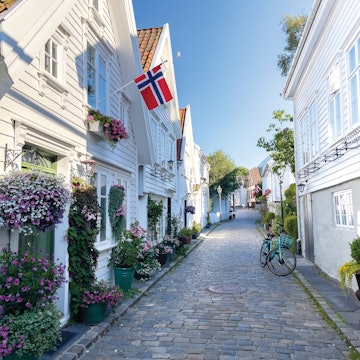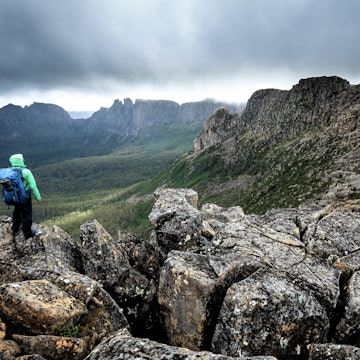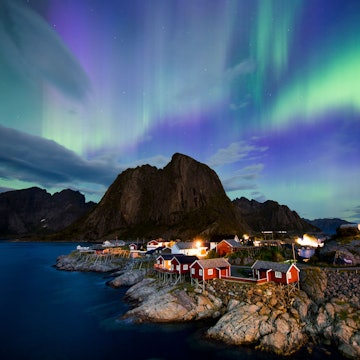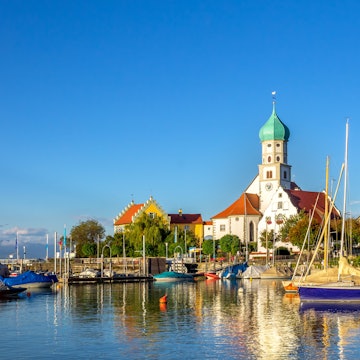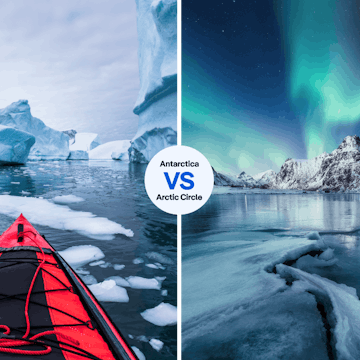

Cecilia Blomdahl in Longyearbyen, or “the village,” as locals call it. Courtesy of Cecilia Blomdahl
Svalbard influencer Cecilia Blomdahl's life in Norway is magical. If you’re one of her millions of social media followers, you already know that. This remote region is a vast Arctic wilderness with stunning glaciers that make it feel a world away from the mainland – its remoteness is part of its charm. Most tourism centers around Longyearbyen – “the village,” as locals call it – which is also the world's northernmost city.
Originally from Sweden, Cecilia moved to Svalbard intending to stay for three months to experience its unique way of life. Nearly nine years later, she's still there living in a cabin outside Longyearbyen with her boyfriend, Christoffer, and dog, Grim. Right now, they’re in the middle of Polar Day or Midnight Sun season – mid April through late August – when the island gets 24 hours of daylight (Polar Night, when there’s 24/7 darkness, runs from the end of October to January).
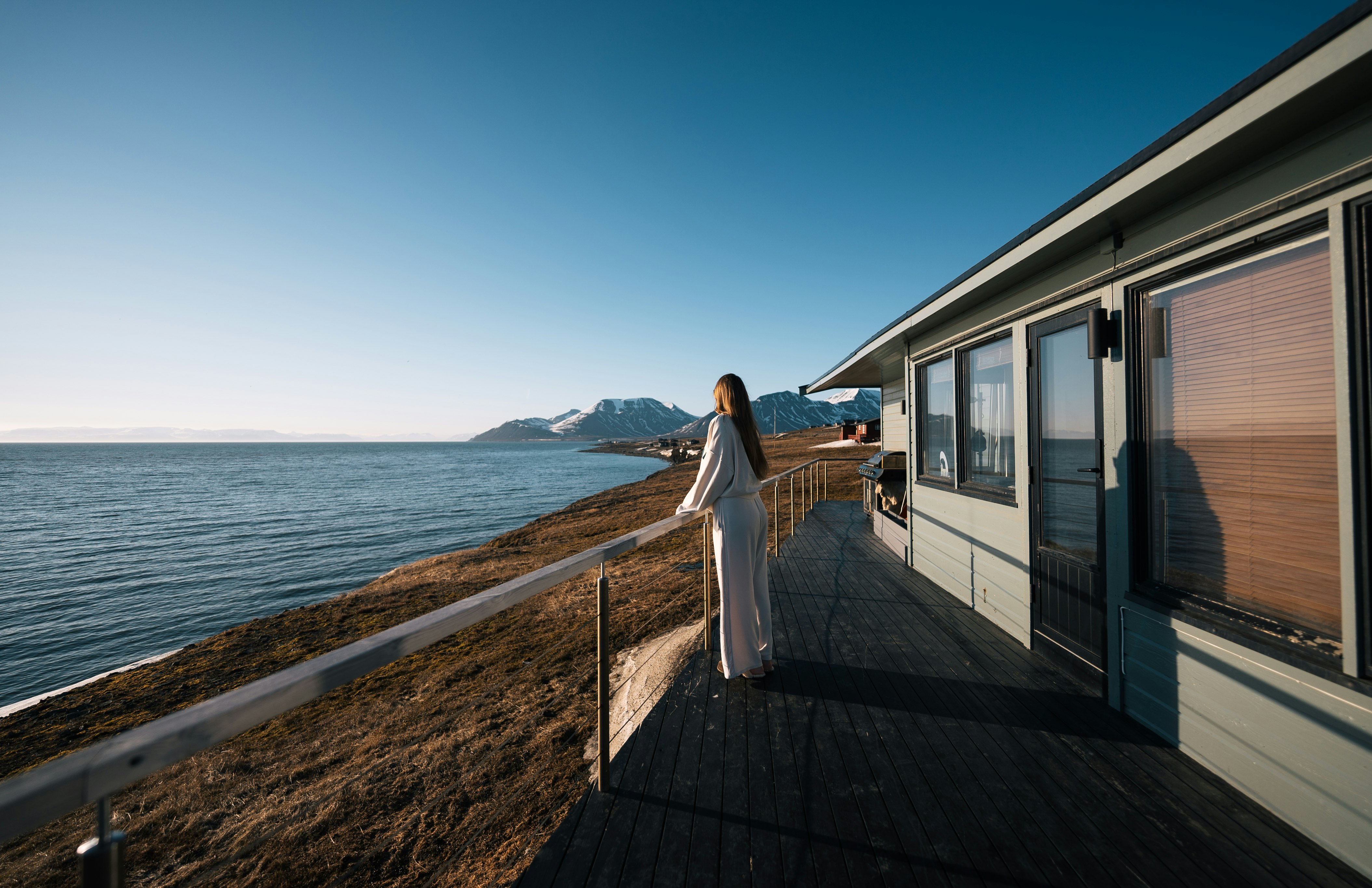
Lonely Planet's Social Media Director, Deepa Lakshmin, asks her for the insider tips on how to get the most out of a trip to Svalbard. If you’re down to experience Svalbard’s extreme climate and even more extreme adventures, read on for Cecilia's insider tips for an unforgettable trip.
Deepa: What are the pros and cons of visiting during Polar Day vs Night?
Cecilia: If it’s your first visit, come in summer because it’s milder. That way you can see and experience everything out on the fjords by boat, a really easy way to get around. You cover a lot of ground and see a lot of wildlife. If you're feeling adventurous, come during sunny winter (March to May) when it’s super cold. You can go on long snowmobile trips out in the middle of nowhere and get that raw, more harsh experience – but it's also very authentic.

Winter has a different kind of light and feel – you get to feel how Arctic we are. If you love darkness like I do, you should definitely visit during Polar Night to see what it's like to live with permanent darkness. But if you want to experience Svalbard, bear in mind you can’t see anything during this period. I don’t think it’s the best time if you want to see nature and wildlife.
You’ll see a super cozy city, people drinking coffee all day long and chilling. That’s basically Polar Night. Of course, you have Northern Lights but you also have those in February and March (after Polar Night).
Deepa: You talk about Polar Day being “zombie season” because it’s so tiring. How do you recommend travelers deal with that?
Cecilia: I think when you visit in summer, you'll be running on energy, so this is the perfect time if you want to get lots done and see everything. There’s no end to the day. You wake up, it’s sunny; you go to bed, it’s sunny. There are so many hours to do stuff!
But I call it the zombie season because living here… it’s very taxing on your body to never get out of the sun. You would think it isn’t, but it actually fills you with energy at all times, so even when you want to close your eyes and chill, your body is still full of energy from the sun. When you visit, bring a sleeping mask and just enjoy it because it is such a cool experience.
Imagine standing in the middle of the night and looking at the sun. It is unreal. At the beginning of the season, I always wait for the first day or night when we have it. If you’re just here for a week, use it to your advantage. See and do everything.

Deepa: How do you and Grim (your dog) spend your ideal day of Midnight Sun?
Cecilia: I'm working with Peet's Coffee to launch their new Bright Collection, and as part of the launch, they've invited a lucky traveler to visit Svalbard in August to see the Midnight Sun and drink coffee with me.
I've created my ideal perfect travel day for the winner. First off we'll be visiting a walrus colony just across the fjord from where we live. We'll be surrounded by incredible glaciers – we'll be so close to them, we can hear the thundering – then suddenly there will be a whole colony of walruses.

Then we’ll come back to the village, go on a little walk with Grim and see the polar bear sign, which is also very cool. Since we have polar bears here, you have to be armed outside of the village. And in the village, we have polar bear signs warning you of the danger. They’re iconic by now. In the evening, we’ll go to a lovely restaurant in a historic part of the village (Sverdrupbyen).
It’s going to start with the landscape, then the vibes, then the history. A perfect day on Svalbard.
Deepa: What’s the minimum amount of time a traveler should spend in Svalbard to see it properly?
Cecilia: Probably five days. It depends a little bit on when you come. The weather is always a bit of a struggle, but in the summer, they now have covered boats, so you can go out in pretty much any weather. The weather is the biggest thing here. It changes fast and can halt plans.
Tip number one: plan everything beforehand because things get fully booked. We don’t have that much of everything, and if you want to see something, it’s good to lock that in a schedule. In summer, the fjords are where you want to be. Being out on the ocean is amazing. You see whales, you can maybe see a polar bear and the walruses (my faves) and all the glaciers. That’s my biggest love on Svalbard, the view of a glacier. It’s so serene.

Deepa: If a traveler is visiting Svalbard with hopes of seeing a polar bear, what should they keep in mind?
Cecilia: First of all, don’t hope for it. Really though, because I haven’t seen one in almost two years, and I live here. I’m out everywhere. I think we all hope to see them, but at the end of the day, if we don’t, that’s the ideal scenario because that means we’re not bothering them. I think for us, to be here and coexist, is the best thing, but the best chance in summer is a fjord trip of any kind because you cover so much ground. To see wildlife you''ll need to see as much of the island as you can. But shift the focus from polar bears to everything, because there are so many beautiful aspects here.
Deepa: How can visitors be responsible and ethical travelers?
Cecilia: I love this. We have a lot of core rules. One is you cannot pick flowers – anything on the tundra that is growing here is protected. They’re beautiful but just leave them. It’s so fragile here, anything that has managed to grow, it’s resilient.
Respecting nature in general is key. Animals are walking around everywhere, and I know when I show reindeer, people are like, "Can I pet it?" You cannot. Take photos but nothing else with you. Just photos and memories!
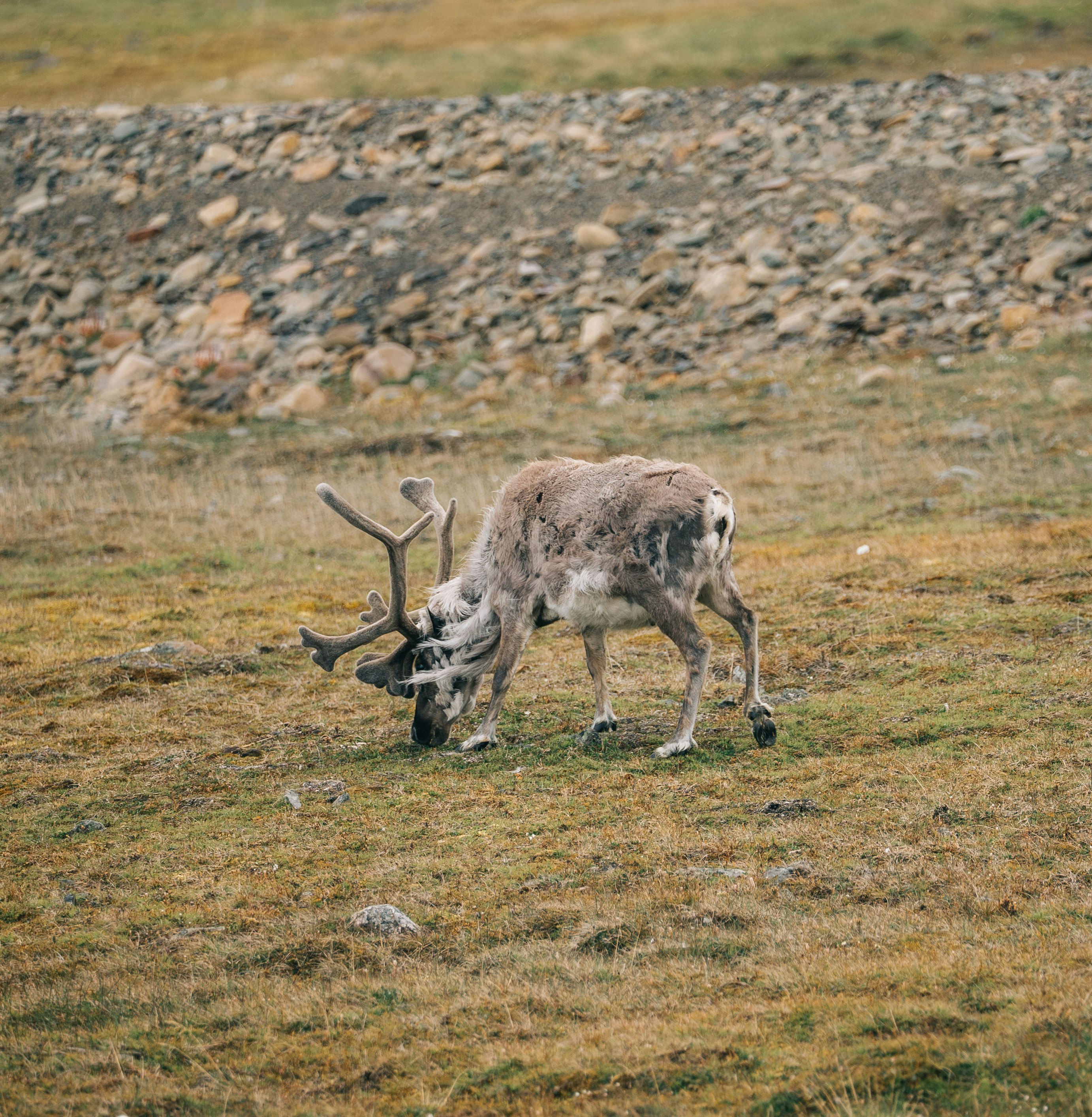
Cecilia’s rapid-fire recs
To get to/from the airport. It’s the shortest distance ever. There’s an airport bus that drops you in the middle of town.
Skip the rental car. Longyearbyen is super walkable; book a taxi or tour to get out of town and into the wild.
Most hotels are in one area. Stay at budget-friendly Gjestehuset 102 – the girls working there are so nice – or the fancier Funken Lodge. They have the best lunch steak sandwich.
Speaking of food... Get lunch at Stationen and dinner at Kroa, which is done up in original trapper style. People usually go there for pizza, but they’ve got a bit of everything. For fine dining, try Gruvelageret.

Book everything as far in advance as possible. Must-do experiences include a snowmobile trip in the winter. I especially like the east coast. It’s a very long trip, a couple of hours one-way, but it’s so worth it. Also, a fjord safari in the summer.
Pack wool. Your only and best friend, regardless of season. Dress in layers and bring boots 1-2 sizes too big. People think that it’s the socks keeping you warm, but it’s actually having air that becomes warm together with the socks. If you have too many socks, you’re going to make your boots cold if there’s no air. But if you have space for the air to warm up, it’s a game-changer. Don’t let chilly toes end your Svalbard adventure early!
This interview has been condensed and edited for clarity. Follow Cecilia on Instagram, TikTok, and YouTube to see more of her and Grim’s adventures on Svalbard.








